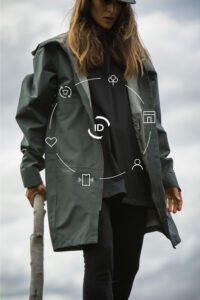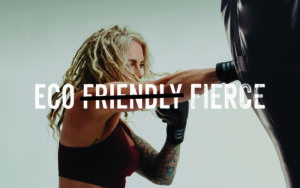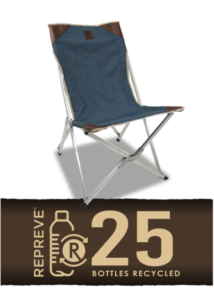While 2021’s Outdoor Retailer had fewer exhibitors, the smaller crowd offered deeper connections and lots of one-on-one networking.
One theme that stood out was the persistent push toward sustainable, eco-friendly production methods and materials.
Innovation & Tech Today scoured the show floor to find companies putting environmental stewardship at the core of their brand strategy.
While there were many brands pushing themselves into greener territory, the following four stood out for their eco-friendly initiatives.
YKK Fastening
Global trim manufacturer YKK is pioneering the wearables industry with the creation of Touchlink, an interactive zipper.
The zipper uses Near Field Communication (NFC) to communicate information to the wearer’s smartphone.

Just tap a smartphone to the zipper to bring up manufacturing information, care instructions, repair services, or recycling options.
It also allows brands to communicate with customers after the point of sale.
Once a brand has purchased the YKK Touchlink zipper, their preferred functionality can be programmed into the YKK operating system.
There is so much potential for this technology.
If you have a favorite cycling jacket, tap your phone to the zipper to let your spouse know you’re leaving the hosue.
The zipper could also prompt your phone to start a routine, such as playing your favorite jogging soundtrack.
Touchlink could even be programmed to dispatch first responders in an emergency.
This small piece of tech has big implications for recycling.
When a garment is at the end of its life, recyclers can use Touchlink to determine the fabric make up of the products and use appropriate recycling methods to process the garment.
Finding the proper recycling stream is huge for creating a greener fashion industry.
It would also allow brands to deliver repair information or even offer discounts on new purchases for recycling old items. It’s an encouraging step toward creating a circular economy for activewear.
Nanga
For 74 years, Nanga has been creating clothing, sleeping bags, and down jackets for outdoor adventurers.
They specialize in down items made from recycled and repurposed materials.
The Japanese company is an active member of the Green Down Project, which collects unwanted down products from any manufacturer and recycles them into new gear.
Any item with a down ratio of 50% or more is eligible for recycling.
Nanga also recovers and uses down feathers from the floors of their production facilities to reduce manufacturing waste.
Hemp Black

This U.S.-based textile company is fusing hemp with sustainable polymers to create disruptive new materials.
For example, Hemp Black carbonized hemp hurd at high temperatures to create HEMP BLACK / eco6, a conductive, activated carbon black product.
Carbon black is the pigment traditionally used in black ink.
By using HEMP BLACK / eco6, the company is able to eliminate the use of petroleum in their production facilities.
HEMP BLACK / eco6 is the first carbon black product to be awarded a Platinum Level Material Health Certificate from Cradle to Cradle.
Recycled nylon and recycled polyester are some of the repurposed fabrics the company is using to create its eco-friendly materials.
Plus, hemp’s odor-fighting and anti-microbial qualities make it an ideal pairing for activewear.
Native by Kijaro

This eco-friendly line of products from Kijaro is constructed from REPREVE polyester, raw aluminum, and other low-impact, recycled waste materials.
A little note about REPREVE — it is a branded fiber made from recycled materials like plastic bottles.
REPREVE materials are used by several major outdoor adventure brands.
REPREVE has so far recycled over 25 billion plastic bottles.
The Native line is offering camp chairs, ultralight cots, and ultralight hammocks.
Each cot recycles 26 plastic bottles, camp chairs recycle 25 plastic bottles, and director’s chairs recycle 14 plastic bottles.
The material is soft, resilient, and super light weight.











